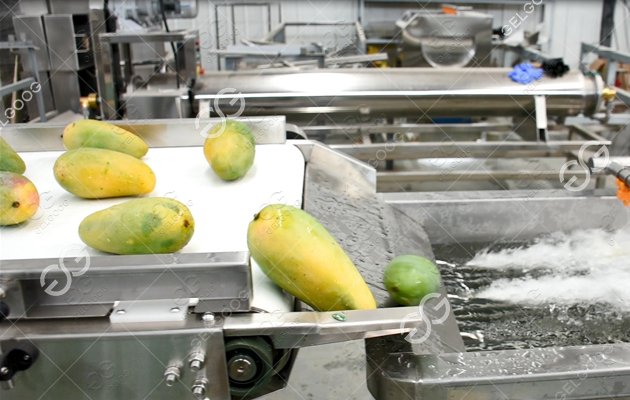Steps in Making Dried Mango
Time:2023-03-13By:admin
Dried mango is a popular snack that is enjoyed by people all over the world. It is made by dehydrating fresh mangoes until all the moisture is removed, leaving behind a chewy, sweet, and nutritious treat. The dried mango production line involves several steps that are critical to ensuring the final product is of high quality. In this article, we will take a look at the production process for dried mango and the steps involved in making this delicious snack.
Step 1:Mango Sorting and Cleaning
The first step in the production of dried mango is sorting and cleaning. This involves sorting the mangoes according to their size, color, and ripeness. The mangoes are then washed by our mango washing machine to remove any dirt, debris, or impurities that may be present on the surface. This step is critical in ensuring that the final product is free from any contaminants that may affect the quality of the dried mango.

Step 2: Peeling and Slicing
Once the mangoes have been sorted and cleaned, they are then peeled and sliced into thin pieces. This is usually done using a mango peeler and slicer machine, which can process large quantities of mangoes quickly and efficiently. The slices should be uniform in size and thickness to ensure that they dry evenly and at the same rate.
Step 3: Pre-treatment
Before the mango slices can be dried, they need to be pre-treated to preserve their color and flavor. This involves dipping the slices in a solution of citric acid and water or lemon juice to prevent browning. Some manufacturers may also add sugar or salt to the solution to enhance the flavor of the dried mango.
Step 4: Drying
The next step in the production of dried mango is drying. There are several methods that can be used to dry the mango slices, including sun-drying, oven-drying, and dehydrator drying. Sun-drying is the traditional method of drying mangoes, but it is slow and can be affected by weather conditions. Oven-drying and dehydrator drying are more modern methods that are faster and more efficient. The mango slices are dried until all the moisture has been removed, leaving behind a chewy, sweet, and nutritious snack.

Step 5: Packaging
Once the mango slices have been dried, they are then packaged for sale. The packaging should be airtight and moisture-proof to ensure that the dried mango stays fresh and does not absorb any moisture from the environment. The packaging can also be designed to enhance the visual appeal of the product and provide important information such as the nutritional value, expiration date, and ingredients used in the production of the dried mango.

Conclusion
The dried mango production line involves several steps that are critical to ensuring the final product is of high quality. The process starts with sorting and cleaning the mangoes, peeling and slicing them into thin pieces, pre-treating them to preserve their color and flavor, and then drying them until all the moisture has been removed. The dried mango slices are then packaged for sale in airtight and moisture-proof packaging. With the right equipment and production methods, it is possible to produce high-quality dried mango that is both delicious and nutritious.
In summary, the steps in making dried mango are: sorting and cleaning, peeling and slicing, pre-treatment, drying, and packaging. By following these steps and using high-quality ingredients and equipment, it is possible to produce delicious and nutritious dried mango that will satisfy customers around the world.










 E_mail
E_mail contact
contact Whatsapp
Whatsapp TOP
TOP